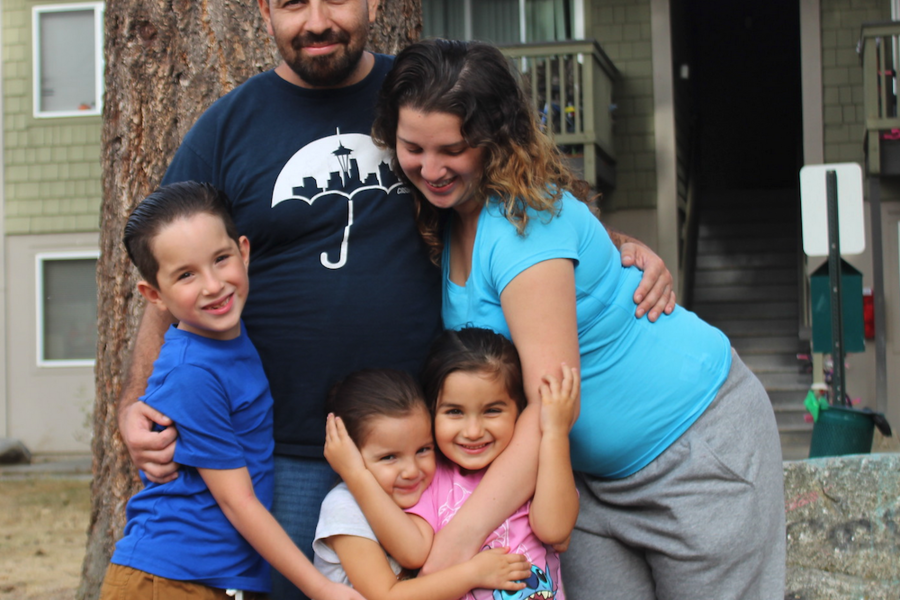Homelessness Prevention - Mary's Place

Locations
Focus Area
- Housing
“It's critical that we prevent children from the experience of homelessness because the impacts on their development are significant, and they can last a lifetime. The research is really clear on this. There is no safe level of homelessness for young children.”
The Issue
There were 11,571 people experiencing homelessness in Seattle at the time of the 2020 point-in-time count, with 53% of them staying in shelters and 47% living on the streets. Five percent more than in 2019. This crisis has been made worse by the COVID-19 pandemic. One year into the pandemic, over 13,500 WA households with children were homeless and over 37,000 WA households with children were either homeless or unstably housed. This is especially alarming because children are particularly vulnerable to the effects of homelessness and some of these effects can be life long.
In comparison to low-income and homeless families, children experiencing homelessness have been shown to have higher levels of emotional and behavioral problems, an increased risk of serious health problems, and lower academic performance. Additionally, research has found that evictions were associated with greater odds of child fair or poor health, developmental risk and hospital admission from the emergency department, as well as adverse caregiver and hardship outcomes. The need to act is urgent. In the Seattle-Metro area, nearly 97,000 families with children reported being behind on their rent in a Pulse Survey from October 2022. And over 9,000 households said it is very likely or somewhat possible that they will be evicted in the upcoming two months.
There are also financial costs. Shelters are not only traumatic for families, they are an expensive intervention. While shelters will likely always be necessary, there is great need for cost-effective solutions. Previous LEO research, which looked at the Homelessness Prevention Call Center operated by Catholic Charities Chicago, showed that relatively modest amounts of emergency financial assistance provided to eligible callers resulted in a 76% decline in homelessness for those families.
The Intervention
Mary’s Place provides eviction prevention and rental assistance for families who have experienced homelessness or extreme housing instability with the opportunity to return for services until they are able to stabilize and maintain their rent. For families who need more than one time support, they work with them to create a housing stability plan that uses SMART goals and can assist with multiple months of financial assistance as needed. This model is different from the majority of current eviction prevention programs in King County, which are almost exclusively one time, capped assistance that households can only access once a year. The idea is to give parents a chance to catch up, decrease their stress level, and then increase their ability to problem solve how to resolve their housing crisis. Whatever the solution, it is driven by the family and Mary’s Place is along to coach, brainstorm, and support with financial assistance.
Research Question
What is the impact of receiving financial assistance with no cap and unlimited renewals on outcomes such as housing stability, employment, income, benefits utilization, and child well-being?
Intended Outcomes
Families at-risk of eviction will be able to stay in their homes and ultimately reach long-term housing stability.
Children and families will not experience the trauma of homelessness and have increased well-being and more positive outcomes as a result.
Research Study Design
This study is a randomized controlled trial to test the impact of an intensive model of homelessness prevention services on outcomes such as housing, income, employment, benefits utilization, and child well-being. In this model of services, families will be eligible to receive financial assistance without a cap and with no limit on the number of renewals available. The treatment group will also work with a prevention specialist to develop a housing stability plan.
The one-time prevention services group will have access to a more traditional model of homelessness prevention services, with the ability to receive up to $3500 of financial assistance that can be renewed once per year. Additionally, there will be a “true control group” who does not receive prevention services through Mary’s Place. Randomization will take place in two stages. First, after a household has applied for prevention services, Mary’s Place will randomly select a pool of participants to be assessed for eligibility and served. Those who are not selected will make up the “true control group”.
Second, Mary’s Place will randomize the applicants who are assessed and found to be eligible, determining whether these participants are referred to a prevention specialist who specializes in one-time or intensive prevention services. All clients will be randomized and eligible to receive the intensive model of services, regardless of their consent status.